Learn expert dog care tips for beginners — from puppy-proofing and nutrition to grooming, training, and vet visits—a complete guide for new dog owners.
- 1- Prepare Your House
- 2- Choose Right Dog Food
- 3- Regular Dog Exercise
- 4- Challenge Your Dog Mentally
- 5- Dog Health Maintenance
- 6- Grooming and Everyday Hygiene
- 7- Socialising Your Puppy
- 8- Train Your Dog
- 9- Regular Check-ups
- 10- Provide Adequate Space
- 11- Set Up a Routine
- 12- Temperature Considerations
- 13- Love and Attention
- 14- Mistakes First-Time Owners Often Make
- 15- Costs of Dog Ownership
- FAQs
Welcoming a dog into your home is one of the most rewarding experiences in life. But if you’re a first-time dog owner, you might also feel overwhelmed. Between choosing the right food, preparing your home, booking vet appointments, and figuring out training, there’s a lot to learn. The good news? By adopting the right approach, you can establish a solid foundation for a healthy and fulfilling relationship with your dog.
Last but not least, proper training and socialization are essential for any dog breed. These will help them become well-behaved and obedient companions.
This guide provides essential dog care tips for first-time owners. From puppy-proofing to grooming routines and health checkups, you’ll get practical advice that makes pet parenting easier and more enjoyable.
1- Prepare Your House
Before your dog arrives, it is essential to create a safe, secure, and welcoming environment. Puppies, in particular, are curious explorers who don’t yet know what’s dangerous. Electrical cords, open trash bins, and houseplants like lilies or aloe can all pose risks. Taking the time to “puppy-proof” your living space will prevent accidents and give you peace of mind.
2- Choose Right Dog Food
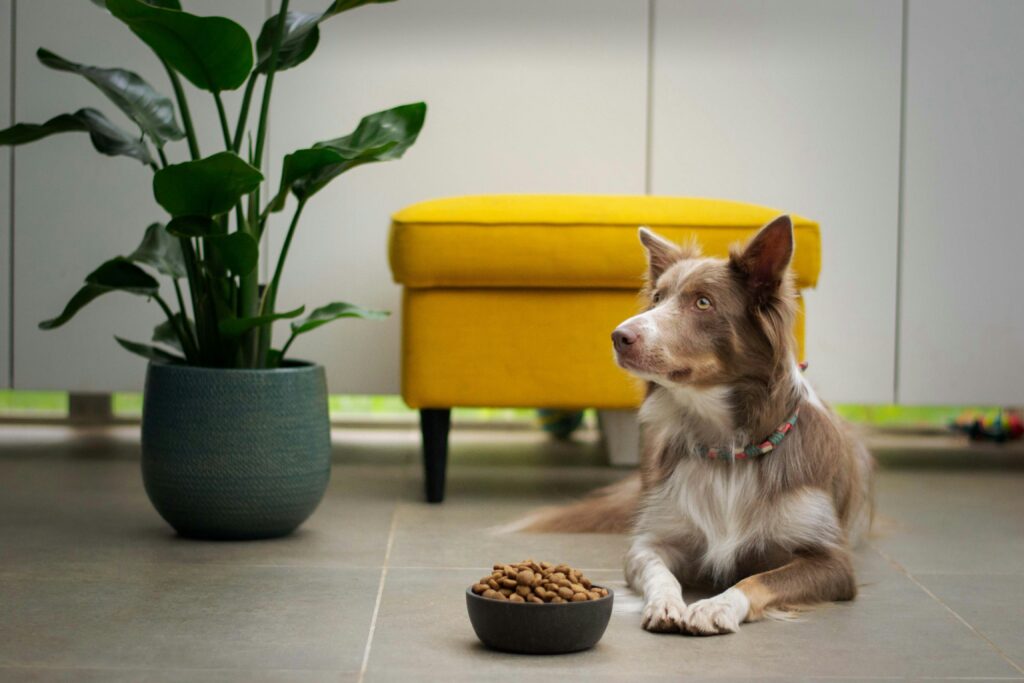
A healthy diet is the cornerstone of your dog’s well-being. Choosing the right food depends on your dog’s age, size, and activity level. Puppies need diets rich in protein and calories to support rapid growth, while adult dogs thrive on a more balanced formula. Senior dogs often benefit from lower-calorie diets that help maintain a healthy weight and include nutrients to support aging joints.
Consistency matters. Feeding your dog at the same time each day helps regulate digestion and reinforces training routines, such as predictable bathroom breaks. While it’s tempting to share table scraps, many human foods — including chocolate, grapes, onions, and garlic — are toxic to dogs and should always be avoided. Treats can be useful for training, but they should make up no more than ten percent of your dog’s daily calories.
3- Regular Dog Exercise
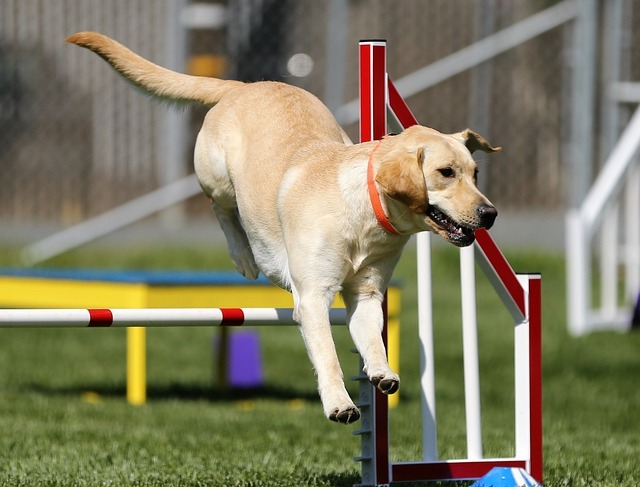
Dogs of every breed and size need exercise to stay healthy, but the type and amount will vary. Active breeds like Border Collies or Labrador Retrievers may need vigorous exercise for over an hour each day, while smaller or less energetic dogs may be content with shorter walks and play sessions. Puppies, with their boundless energy, benefit from frequent short bursts of activity, while senior dogs usually prefer slower, gentler walks.
4- Challenge Your Dog Mentally
Physical activity is only half the picture. Dogs also thrive on mental stimulation. Without it, they may become bored, anxious, or destructive. Puzzle feeders, training sessions, scent games, or even a round of fetch provide the challenge they need to stay sharp. A well-exercised and mentally stimulated dog is not only healthier but also calmer and more content at home.
5- Dog Health Maintenance
Larger dog breeds such as Great Danes, German Shepherds, and Labrador Retrievers are more susceptible to joint issues like hip dysplasia and arthritis. These conditions can cause severe pain, discomfort, and mobility issues for your paw friend. Therefore, it’s crucial to take proactive measures to support your dog’s joint health.
To support your dog’s joint health, provide a comfortable bed that reduces pressure on their joints. Also, avoid excessive jumping, especially for puppies, as landing from heights can stress their developing joints.
Another way to support the dog’s joint health is by incorporating joint supplements into their diet. These supplements can help reduce inflammation and pain in the joints, as well as promote joint mobility and flexibility.
6- Grooming and Everyday Hygiene
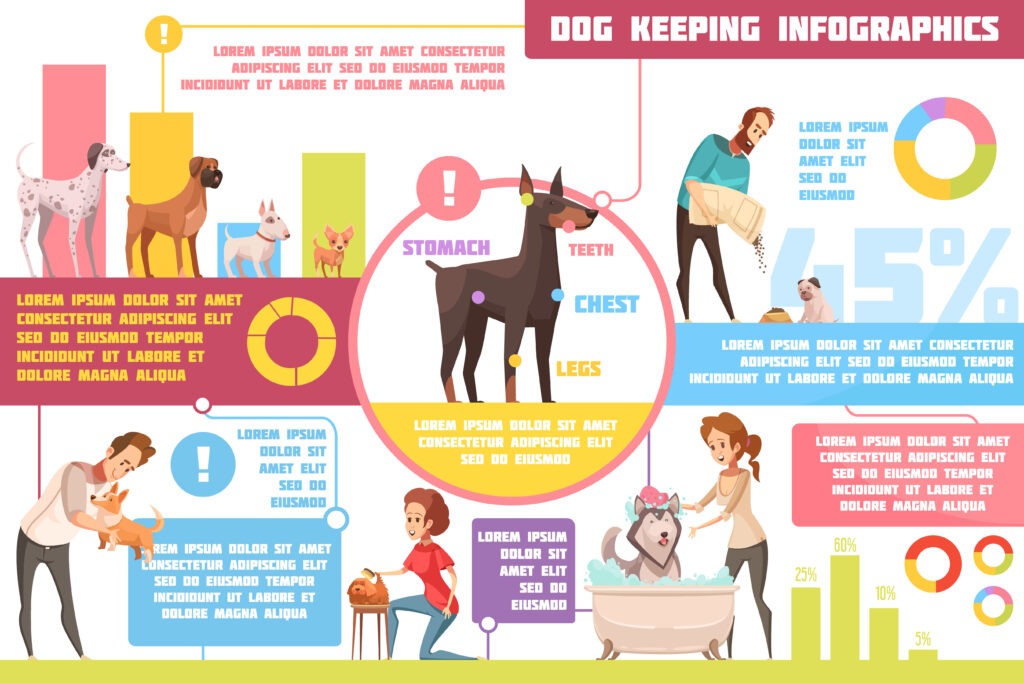
Grooming your dog’s coat, nails, teeth, and ears goes beyond appearances; it directly impacts their health. Brushing your dog regularly prevents mats and tangles, distributes natural oils, and allows you to spot skin issues early. The frequency of brushing depends on coat type — long-haired breeds often need daily attention, while short-haired breeds may only need it once a week.
Bathing schedules vary as well. Most dogs do well with baths every four to six weeks, although dogs with oily coats or skin conditions may require more frequent care. Always use a dog-safe shampoo, since human products can irritate their skin.
Nail trimming should be part of your routine, ideally every three to four weeks, as overgrown nails can cause discomfort. Dental care is equally important. Regular tooth brushing with dog-safe toothpaste or the use of dental chews helps prevent gum disease, which is one of the most common health problems in dogs. Don’t forget the ears, especially for breeds with floppy ears that can trap moisture and develop infections.
7- Socialising Your Puppy
Socialization is equally critical, especially in the first few months of a puppy’s life. Exposure to new people, other dogs, and different environments helps prevent fear and anxiety later on. A puppy who has positive experiences early on will grow into a confident, well-mannered adult.
Consistency and patience are key. Dogs learn best when the same rules are applied every day. Positive reinforcement — using praise, play, or small treats as rewards — is far more effective than punishment and helps build trust between you and your dog.
8- Train Your Dog
One of the most important investments you can make in your dog’s future is training. House training should begin immediately, and crate training is often a useful tool to help with structure and bathroom routines. Leash training is another early priority, teaching your dog to walk calmly by your side rather than pulling ahead.
When dogs respond well to your training methods, you can handle them in various situations with ease. To teach your dog basic commands and tricks such as ‘sit,’ ‘stay,’ and ‘come,’ you need to be patient and consistent. Use positive reinforcement, such as treats, toys, and praise, to motivate your pet and create a positive learning environment.
9- Regular Check-ups
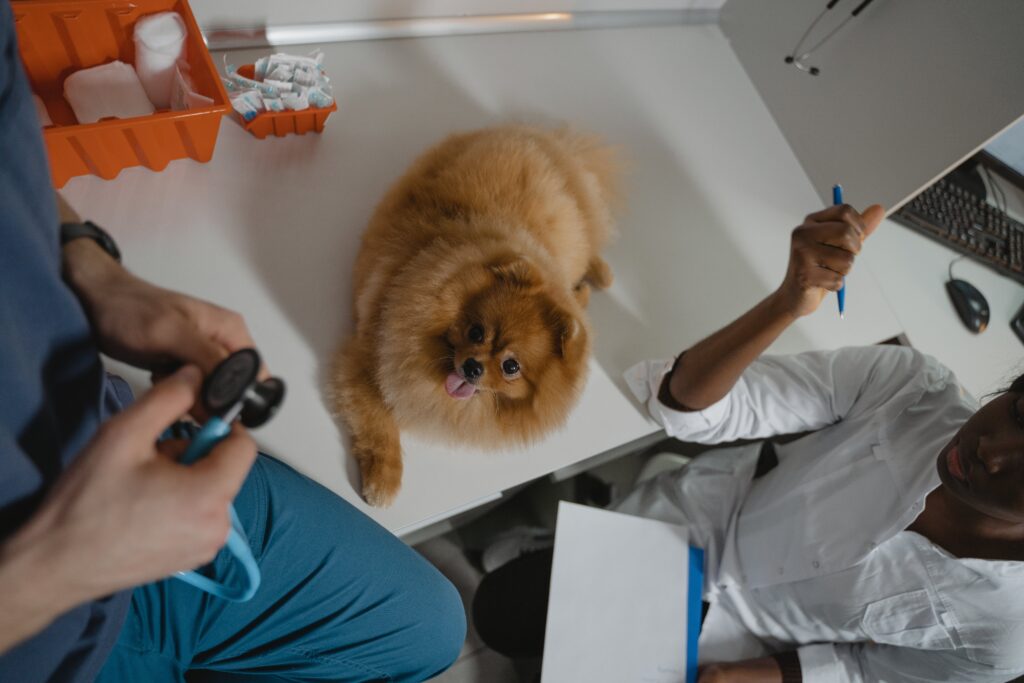
Regular veterinary visits are vital to your dog’s well-being. Your dog should see a vet within the first week of arriving home for a thorough checkup. During this visit, your veterinarian will establish a vaccination schedule and discuss parasite prevention, including flea, tick, and heartworm control.
Spaying or neutering your dog not only helps control the pet population but also reduces the risk of certain cancers and may prevent unwanted behaviors. Annual checkups — or semi-annual for senior dogs — give your veterinarian the chance to catch health concerns early, when they are most treatable.
10- Provide Adequate Space
Owning a massive dog is a huge responsibility that requires careful planning and preparation. It is essential to consider the space your dog needs for growth and development. If you live in an apartment-type house, provide them with a separate room according to their size and energy level.
Your dog’s room should be large enough to allow them to stretch, play, and explore freely. It should also be equipped with comfortable bedding, toys, and other essentials that will keep them happy and healthy.
11- Set Up a Routine
Dogs thrive on structure. Establishing a daily routine for feeding, exercise, training, and rest helps your dog feel secure and confident. A typical day might start with a morning walk, followed by breakfast, midday play or training sessions, and another walk in the evening before dinner. Family time and relaxation round out the day, with a final bathroom break before bed.
Routines make training easier and reduce anxiety, especially for puppies adjusting to a new home. Over time, your dog will come to anticipate the flow of the day, making transitions smoother for both of you.
12- Temperature Considerations
It’s important to note that large breeds are more sensitive to extreme temperatures. They can’t regulate their body temperature in extreme weather, so they depend on their owners for comfort. If the weather is hot, it’s important to provide shade and plenty of water so they can stay hydrated and cool. During the colder months, it’s essential to protect them with warm clothes and a cozy bed to help maintain their body temperature.
13- Love and Attention

It’s crucial to spend quality time with them to build a strong bond that can enhance their overall happiness and well-being. Researchers have found that dogs can understand human emotions and also express their feelings. Spend quality time together daily, whether it’s walking, playing fetch, or cuddling (many dog breeds are cuddly) on the couch.
14- Mistakes First-Time Owners Often Make
Even the most well-meaning owners can make missteps. Overfeeding and offering too many table scraps often lead to obesity, which can shorten a dog’s life. Inconsistent training or unclear rules create confusion and frustration for dogs, resulting in unwanted behaviors.
Neglecting dental care is another common oversight, one that often leads to painful gum disease in later years. Financial preparation is another area that catches many new owners off guard. Between food, veterinary care, grooming, and supplies, the costs of dog ownership can add up quickly.
15- Costs of Dog Ownership
Caring for a dog is not only an emotional commitment but also a financial one.
| Expense Type | Estimated Cost (US) | Frequency |
| Food | $300–$700 | Annually |
| Routine Vet Care | $200–$500 | Annually |
| Vaccinations | $75–$200 | First Year |
| Grooming | $300–$500 | Annually |
| Supplies (toys, leash, bed) | $100–$300 | Annually |
| Emergency Vet Visits | $500+ | As needed |
Caring for a dog as a first-time owner may feel overwhelming, but with the right approach, it becomes second nature. Focus on nutrition, exercise, training, grooming, and health care, and your dog will reward you with loyalty and unconditional love. Remember — consistency, patience, and preparation make all the difference in raising a happy, healthy pup.
FAQs
How often should I walk my dog?
Most dogs need at least 30 to 60 minutes of exercise daily, though active breeds require more. Puppies and seniors may need modified routines suited to their abilities.
How do I stop my puppy from chewing furniture?
Redirecting them to appropriate chew toys is key. Consistency, patience, and plenty of supervision will help prevent destructive habits.

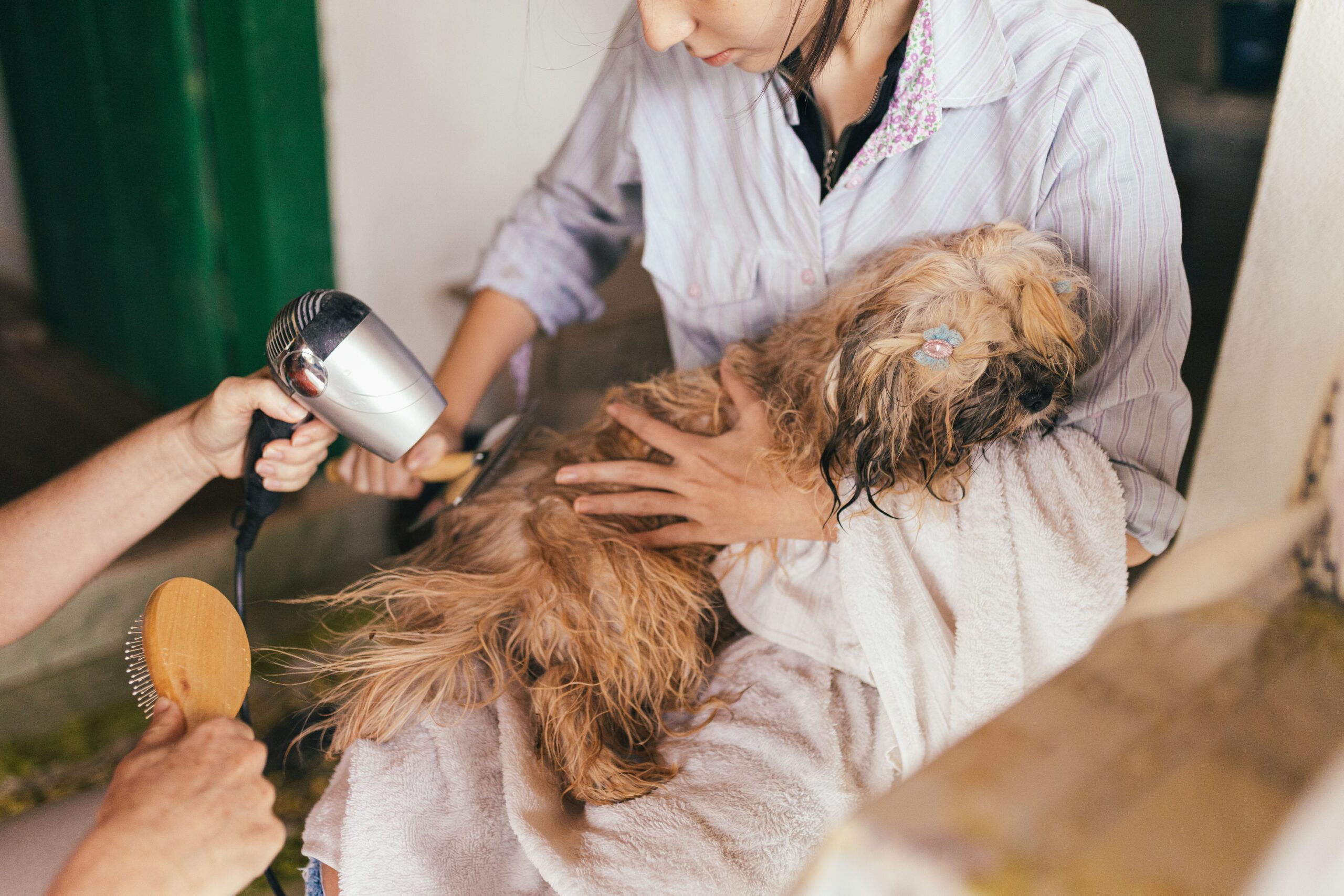
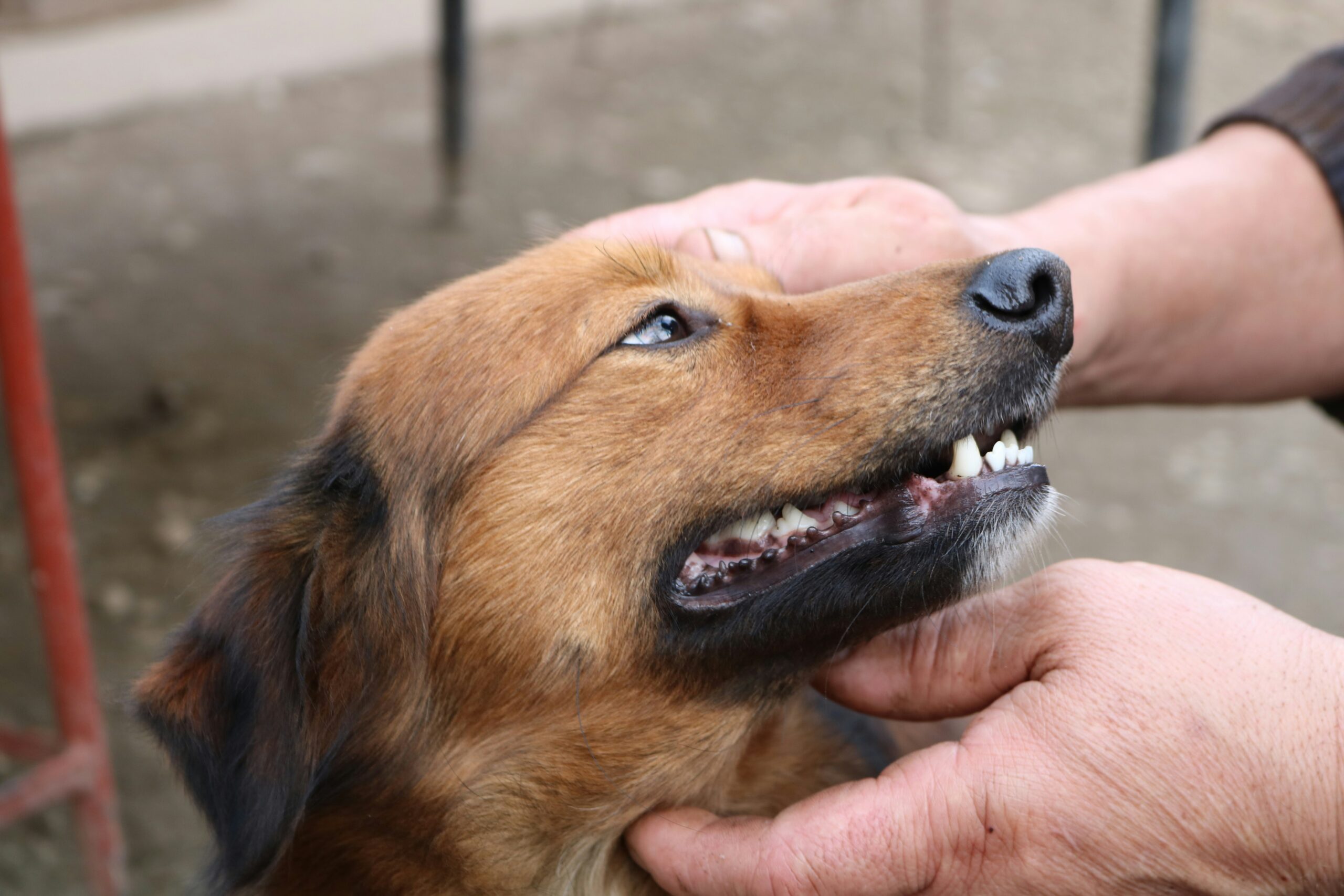
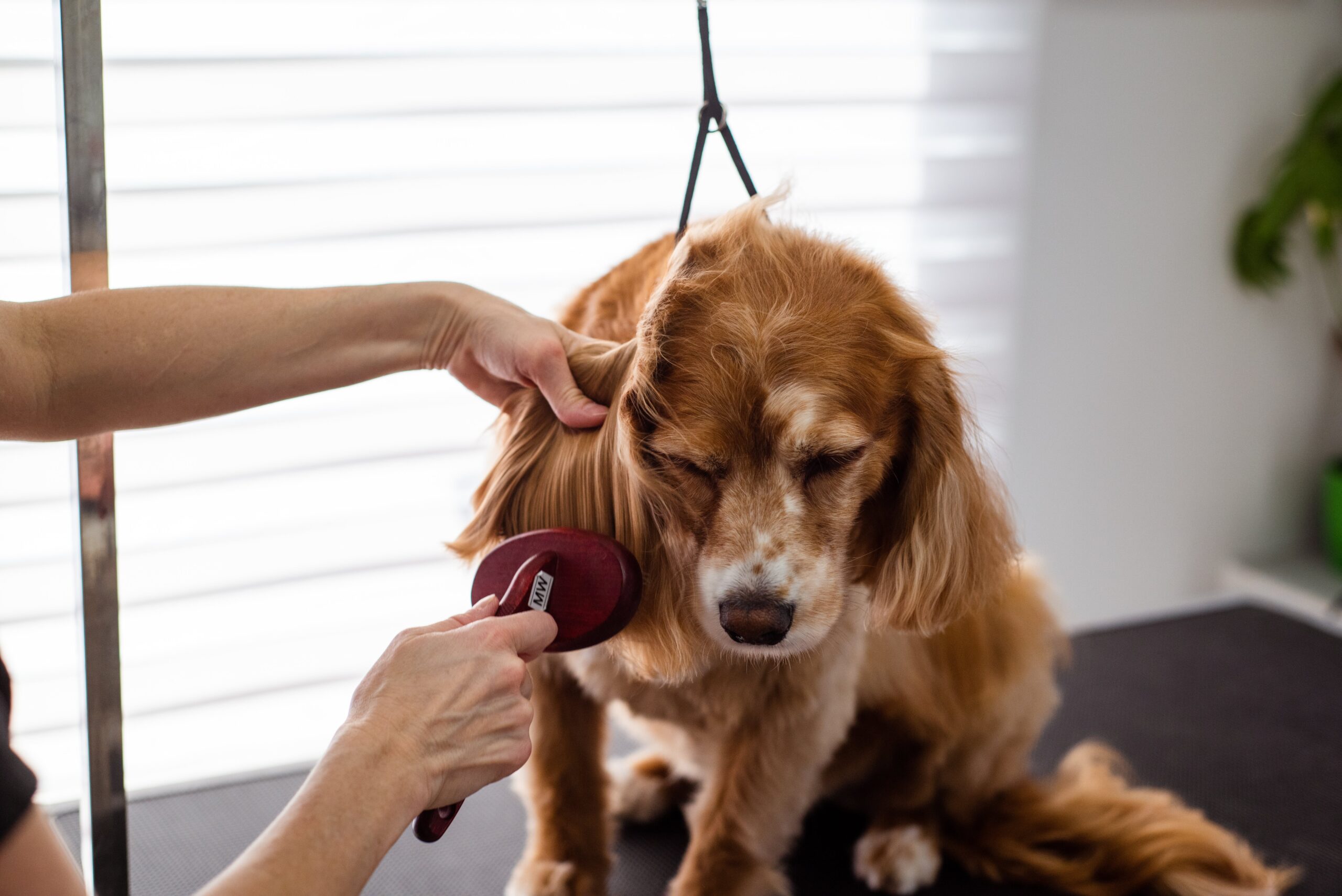
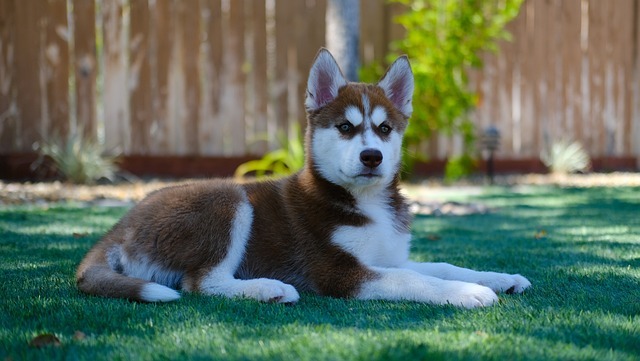
The consistency and high quality of The content are something I really appreciate. Thank you for The dedication.